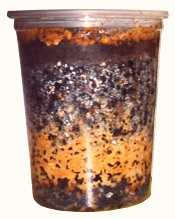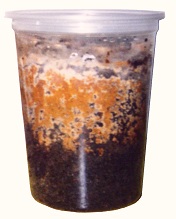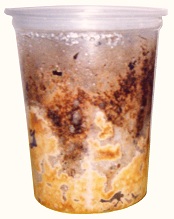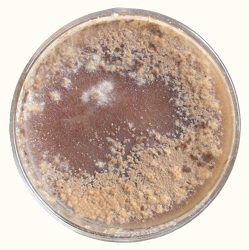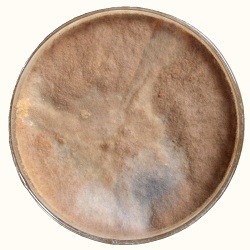 |
|
Research Photo Pages
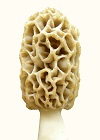
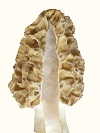
|
Sclerotia is a mass of resistance cells which carry morel mycelium through summer heat and winter cold. Morel mycelium has no tolerance to adverse conditions including dehydration, because it still has yeast physiology. Yeasts evolved from molds, when sugary solutions appeared some time after modern biology began 65 million years ago. With sugary solutions, yeast were no longer exposed to the atmosphere; so they lost the ability to tolerate dehydration. When the morel evolved from a yeast, it could not re-aquire the ability to tolerate dehydration, which mushroom mycelium requires for growing on clay type soil. So the morel grows in sand, which does not dry out easily, because it lacks capillary action. Still, in the summertime, too much heat and drying would be intolerable to morel mycelium. So the mycelium converts into sclerotial cells, which are specialized for tolerating adverse conditions. When rain occurs, morel sclerotia grows back into mycelium. The cells are constantly going back and forth between sclerotia and mycelium. There is not much loss of cell mass, because sclerotia stores up energy.
|
|||||||||||||||||||||
